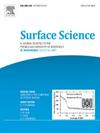A first-principles study of hydrazine adsorption and decomposition on Pt(111) surface: The effect of partially dissociative H2O on decomposition process
IF 2.1
4区 化学
Q3 CHEMISTRY, PHYSICAL
引用次数: 0
Abstract
Density functional theory with dispersion correction (DFT-D3) is used to investigate the adsorption and decomposition of hydrazine (N2H4) on Pt(111) surface, and the effect of water on decomposition process is considered. The stable adsorption configurations and adsorption energies are obtained for hydrazine, water and intermediate species. The hydrazine decomposition is investigated in three kinds of pathways including intramolecular dehydrogenation and intermolecular dehydrogenation via H atom or OH group assistance. It is shown that the adsorption of water in partially dissociative conformation (H and OH radicals) is the most stable on Pt(111) surface for its largest adsorption energy. The OH group can greatly promote the decomposition of hydrazine by drastically decreasing the energy barriers of dehydrogenation reactions, which are closely related to the overall PDOS distribution shifts of their transition states. From thermodynamics and kinetics points of view, the favorable decomposition pathway of hydrazine may be N2H4+OH→N2H3+OH→NHNH+OH→NNH+OH→N2.

Pt(111)表面联氨吸附分解的第一性原理研究:部分解离水对分解过程的影响
采用离散校正密度泛函理论(DFT-D3)研究了肼(N2H4)在Pt(111)表面的吸附和分解,并考虑了水对分解过程的影响。得到了对肼、水和中间体的稳定吸附构型和吸附能。研究了肼的分子内脱氢和氢氧根辅助下的分子间脱氢三种途径。结果表明,Pt(111)表面部分解离构象(H和OH自由基)对水的吸附最稳定,吸附能最大。OH基团通过大幅降低脱氢反应的能垒,极大地促进了肼的分解,这与其过渡态PDOS的整体分布变化密切相关。从热力学和动力学的角度来看,联氨的有利分解途径可能是N2H4+OH→N2H3+OH→NHNH+OH→NNH+OH→N2。
本文章由计算机程序翻译,如有差异,请以英文原文为准。
求助全文
约1分钟内获得全文
求助全文
来源期刊

Surface Science
化学-物理:凝聚态物理
CiteScore
3.30
自引率
5.30%
发文量
137
审稿时长
25 days
期刊介绍:
Surface Science is devoted to elucidating the fundamental aspects of chemistry and physics occurring at a wide range of surfaces and interfaces and to disseminating this knowledge fast. The journal welcomes a broad spectrum of topics, including but not limited to:
• model systems (e.g. in Ultra High Vacuum) under well-controlled reactive conditions
• nanoscale science and engineering, including manipulation of matter at the atomic/molecular scale and assembly phenomena
• reactivity of surfaces as related to various applied areas including heterogeneous catalysis, chemistry at electrified interfaces, and semiconductors functionalization
• phenomena at interfaces relevant to energy storage and conversion, and fuels production and utilization
• surface reactivity for environmental protection and pollution remediation
• interactions at surfaces of soft matter, including polymers and biomaterials.
Both experimental and theoretical work, including modeling, is within the scope of the journal. Work published in Surface Science reaches a wide readership, from chemistry and physics to biology and materials science and engineering, providing an excellent forum for cross-fertilization of ideas and broad dissemination of scientific discoveries.
 求助内容:
求助内容: 应助结果提醒方式:
应助结果提醒方式:


